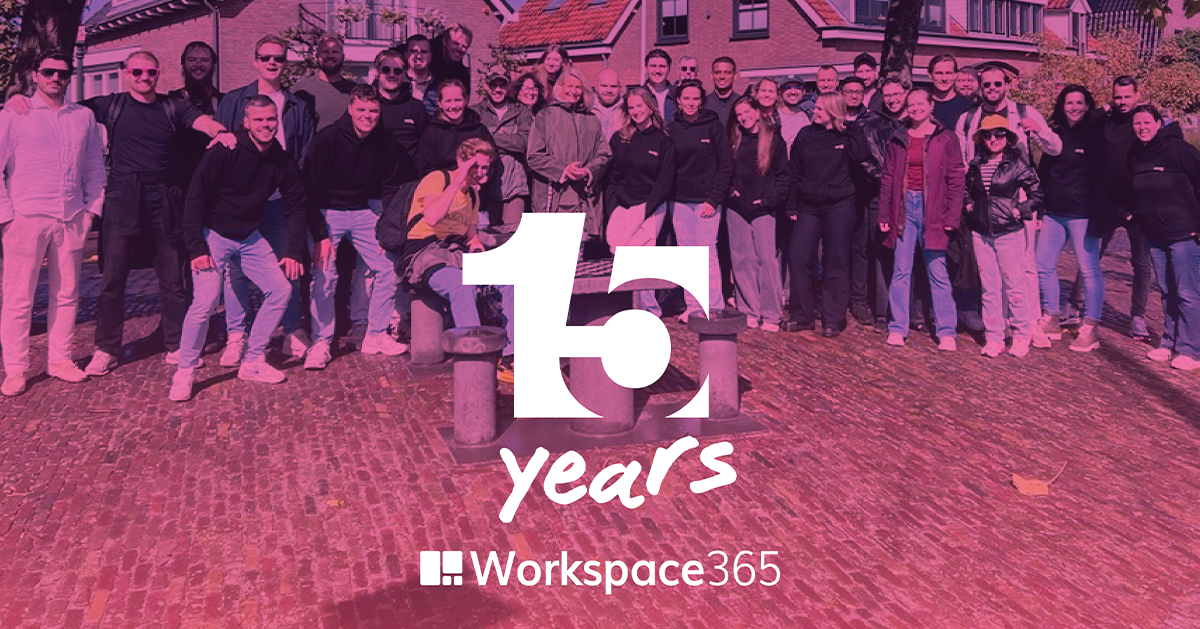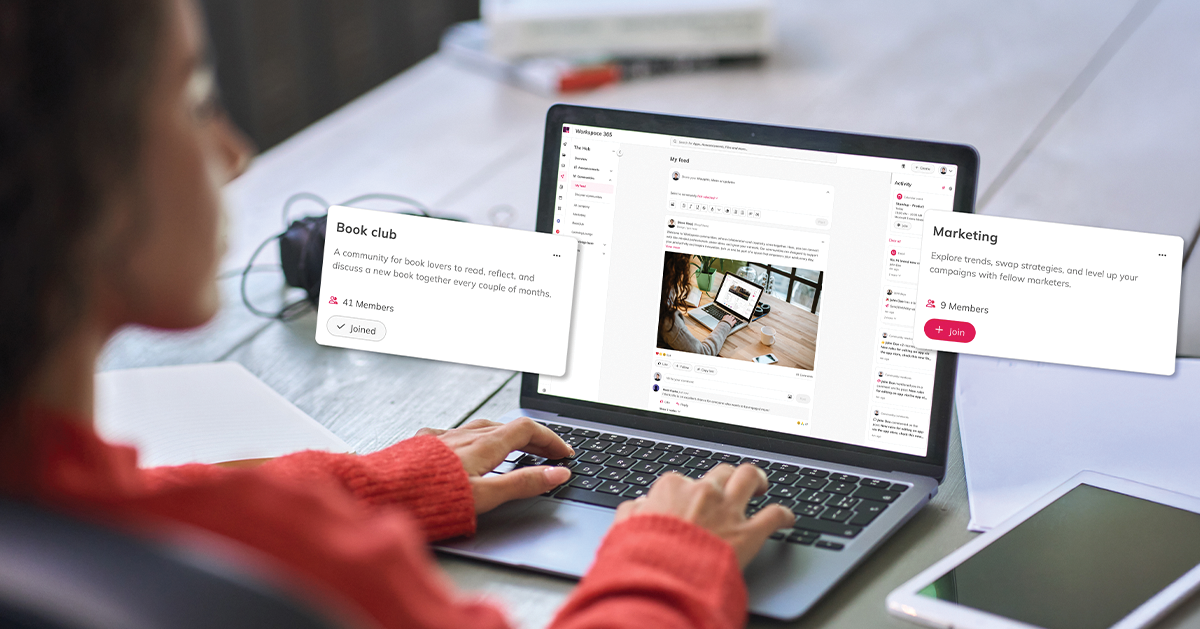Developments such as the rise of information and communication technologies and hybrid working have changed the role of facility management enormously. This is especially true when IT is outsourced to an external party and becomes the responsibility of facilities management. Whether IT is provided in-house or externally: a digital workspace, as we explain in this article, helps facility management to work smarter and faster, to implement attractive improvements and to realise considerable cost savings.
What is facility management?
It is always good to stop and think about the basics. What exactly is facility management? Quite simply, it is the management of all the buildings of an organisation and all the facilities within them. The facility manager takes care of the management, repairs and maintenance and ensures that it meets legal, health and safety standards.
Important aspects within the scope of facility management are real estate, communication and information technologies, inspections, contract management and safety.
Facility management and IT
In most organisations, IT is the backbone of the business. Not all organisations have their own IT department. In that case, it often becomes part of facility management. Because of the immense importance of IT - a failure can bring a large number of business processes to a standstill - the facility manager usually engages an external IT partner to manage the digital environment, where the facility manager has final responsibility and acts as a kind of project manager in the IT field.
This is where the field of IT facilities management comes into play. An external partner can manage the digital environment, but not the physical one. Within IT facilities management this means ensuring that all necessary facilities are in place to guarantee the optimal operation of the IT infrastructure. Think for example of ventilation, the right temperature in server rooms and the realisation of sufficient power for all hardware, but also of the creation of synergy between the digital resources and the workplace facilities.
Facility management software
So, what is facility management software? It entails software that supports all kinds of processes in the facilities management spectrum. Nowadays, these are mainly SaaS tools that enable facility managers to perform all kinds of tasks and access information via a web-based dashboard. The use of facility management software is no superfluous luxury these days. Manual facility management is prone to errors and inefficient. Moreover, especially for organisations with multiple locations, facility management is too complex to carry out manually.
The advantages of this type of software are obvious. For example, you have insight into the costs per square metre, per user and per workplace. Thanks to such advanced analytics, it becomes easier to discover patterns and to identify areas for improvement and it allows for predictive maintenance. Perhaps the most important advantage: you can realise considerable cost savings. Which is great, considering that the average workplace costs no less than 9,695 euros per year, according to Colliers.
Popular forms of facilities management software are Computer-Aided Facilities Management (CAFM) software and Computerised Maintenance Management Software (CMMS). Whereas CAFM is mainly about having a central database, CMMS offers more extensive functionalities such as predictive maintenance and automated maintenance planning. Frequently used facility management software applications and functionalities include multi-site facilities management, maintenance and repairs, asset management, procurement, invoicing, data analytics and energy management.
Facility management and the modern office
The corona crisis forced organisations to suddenly become location-independent. With the associated rise of hybrid working, many organisations are now scaling back-office space and implementing smart office software to manage office occupancy.
The modern office is therefore a smart office, or a flexible working environment where the building, the IT infrastructure and the users are connected via technology. Thanks to sensor-driven hot desks, workplace occupancy data and smart office software, employees can book workplaces, meeting rooms and shifts in the office, locate colleagues and control the light and temperature, among other options.
The modern office is usually also equipped with a digital workspace. In the hybrid working environment, employees must be able to work completely location-independent and have fast and faultless access to all their tools, documents and information. Therefore, the modern office requires a digital workspace that facilitates employees having everything at hand in one environment and with one click.
As a result, the role of the facility manager has changed. Whereas they used to be primarily a service provider, it is now more about creating the optimal workplace. This means an ultimate employee experience where the well-being of employees is central. If a facility manager knows how to create an excellent office with all the necessary and desirable facilities and a digital workspace that is as pleasant as it is accessible, it results in a higher level of wellbeing among employees, better performance, lower absenteeism and less staff turnover.
A digital workspace for Bergweide Nursing Home
An example of an organisation where facility management is responsible for IT is Bergweide nursing home in Heerlen. Via Hands on IT (formerly known as ITSN), the care organisation has implemented the Workspace 365 digital workspace. "The new workspace is fast, accessible from anywhere, completely tailored to Bergweide and designed in such a way that people do not have to search through a whole range of programmes", says Jo Hendrickx, facilities manager & financial controller at Bergweide.
Workspace 365 was chosen for three reasons: the smooth integration with Microsoft 365, the technology for unlocking non-web-based applications and offering them in an easily accessible way, and the fact that the workspace was not developed from a technology perspective but rather from the perspective of the user. For Hendrickx, as facility manager, the implementation of Workspace 365 has had a major positive impact, he says: "I always had a bunch of programmes open and I had to keep logging in. Now I have everything on one screen and I only have to log in once to access all the programmes, including when I'm at home."
Digital workspace: access everything in one click
Ultimately, as an organisation you want a digital workspace for your employees as well as for the facility manager, where everything can be accessed with one click. Ideally, there is no need to click through to applications; instead, employees see application information directly in their digital workspace. For facility management, this could be, for example, when someone reports damage in the building.
Workspace 365 as adaptive digital workspace
Workspace 365 is an adaptive digital workspace that can combine all components of the old and new IT landscape: local, web and hosted. The basis of the workspace is that all applications, information, documents, processes, tasks and the intranet are combined and offered in a personalised manner within one environment. The workspace is adaptive and changes based on, for example, device, location, browser and employee role.
From the Activity Feed you can integrate the most important tasks and notifications. This enables employees to process information more efficiently and perform tasks quicker without having to leave the digital workspace. Tasks, information and processes from external systems can be offered in a way and at a time when they are relevant.
Finally, not only useful for facility managers but for everyone in the organisation: within Workspace 365, the intranet or individual intranet elements can be integrated into the digital workspace or vice versa.







